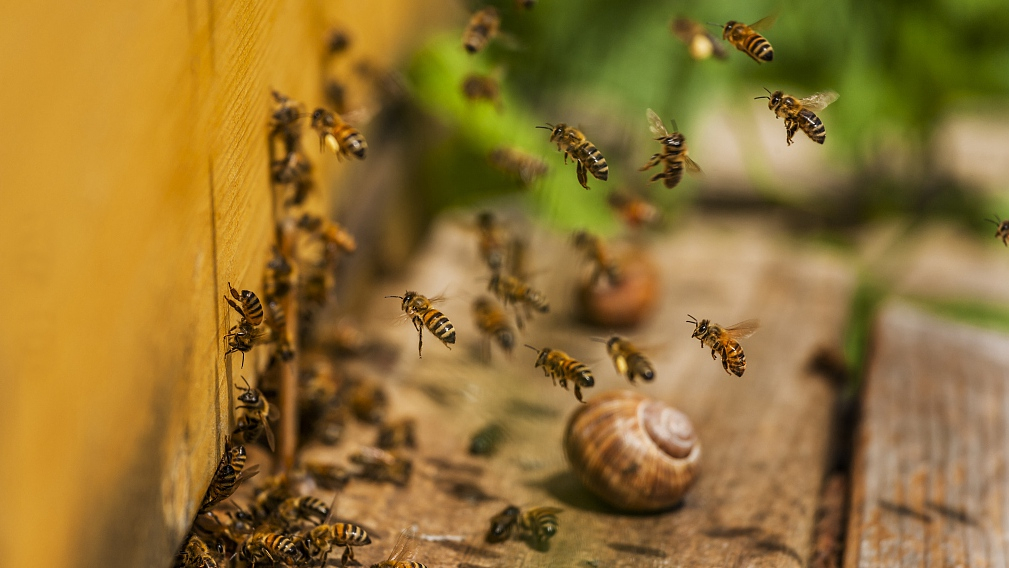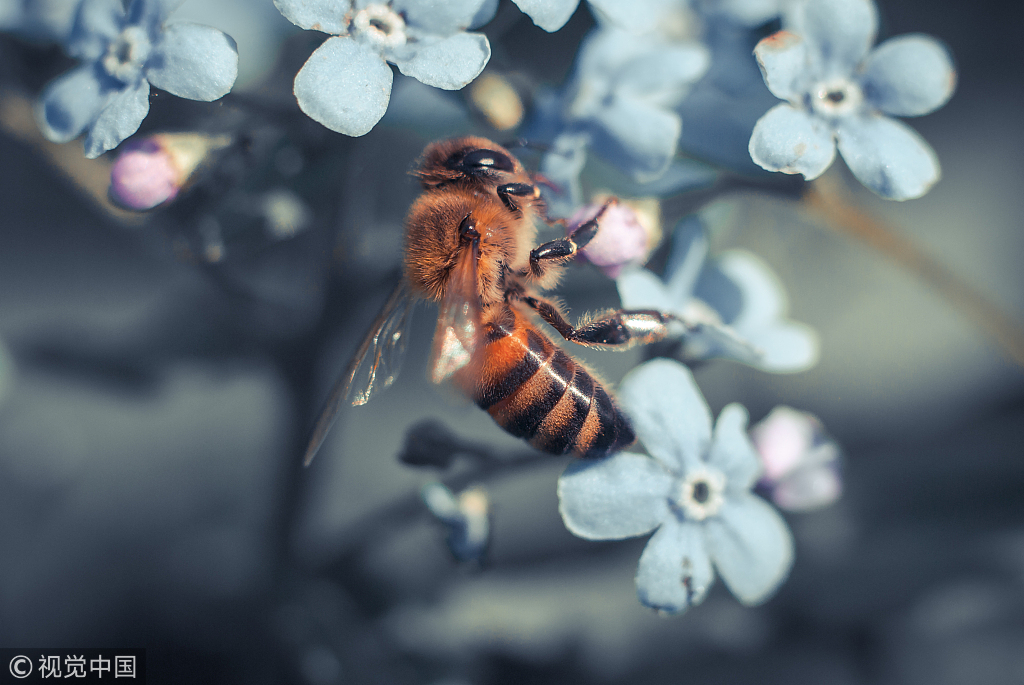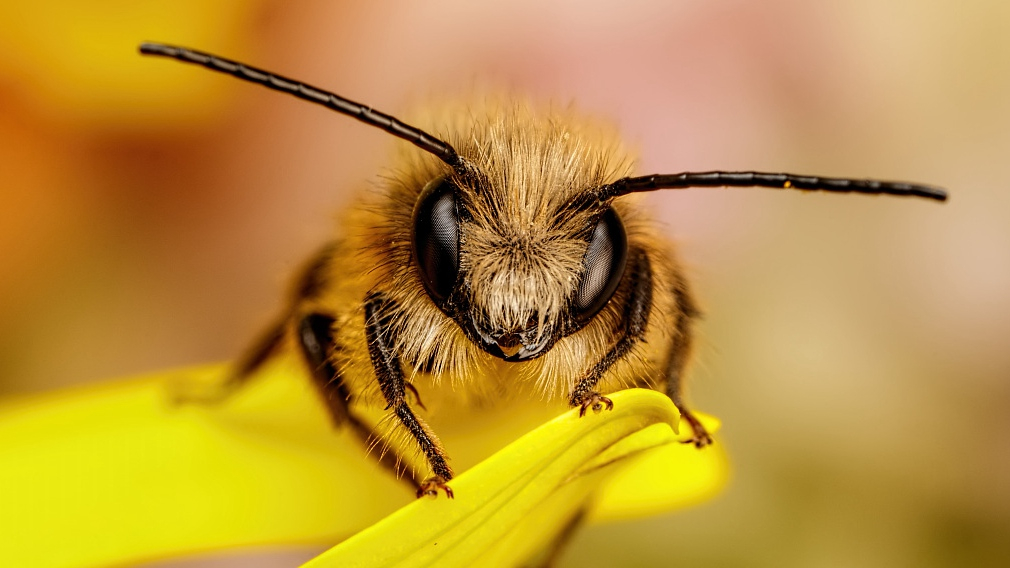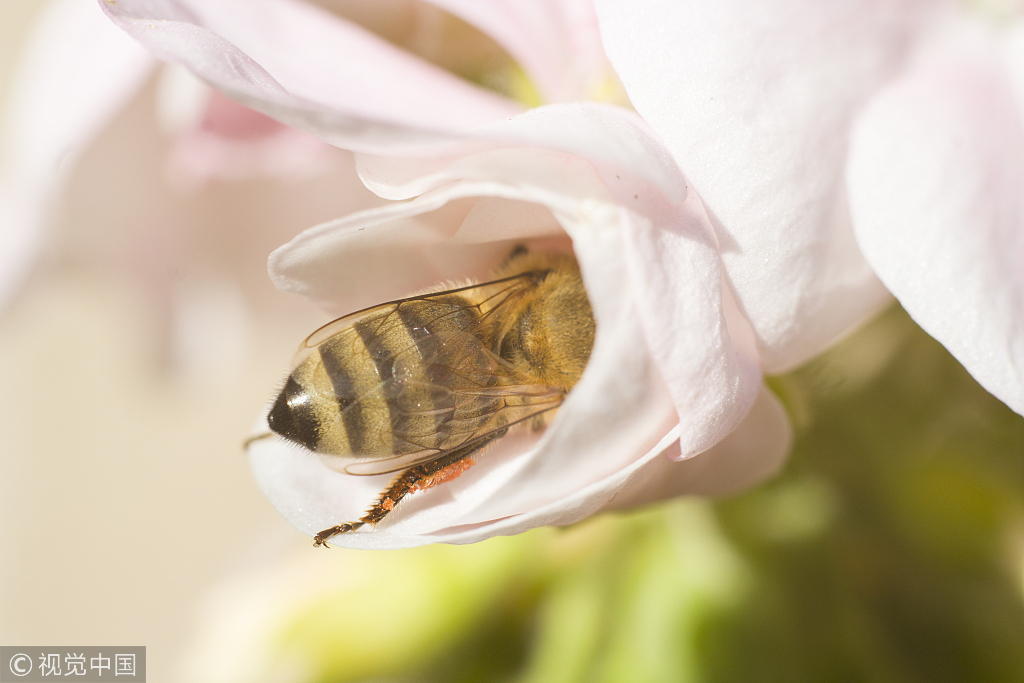
Animal
10:38, 11-Feb-2019
Not just primates, bees can also solve basic maths problems!
CGTN

We know bees are hard-working, but do you know that they can also solve basic maths problems?
A study shows that bees, despite their tiny brains, are able to solve basic addition and subtraction problems – a stunning feat considering the level of cognition required for arithmetic.
The research, led by scientists from RMIT University in Australia, involved training individual honeybees to enter a maze where they would encounter between one and five shapes, colored either blue or yellow.

A bee stands on a flower. /VCG Photo
A bee stands on a flower. /VCG Photo
If the shapes were blue, the bee had to add one number, and if they were yellow the bee had to subtract one to find the solution.
The bees would make their selection by entering a tunnel with either the correct or incorrect answer, where they would be rewarded if they got it right.
Initially the bees made random choices, however, after roughly 100 learning trials lasting four to seven hours, they cracked the code that blue meant plus one and yellow meant minus one and could then apply the rule to new numbers.

A close-up of a red Mason bee. /VCG Photo
A close-up of a red Mason bee. /VCG Photo
"Our findings suggest that advanced numerical cognition may be found much more widely in nature among non-human animals than previously suspected," RMIT Associate Professor Adrian Dyer said.
Previous studies have shown that primates, birds, babies, and even spiders can add and subtract and now bees can join that highly achieving group.

A bee is inside a flower collecting nectar. /VCG Photo
A bee is inside a flower collecting nectar. /VCG Photo
Solving maths problems requires two levels of sophisticated cognition, the first being to hold the rules around adding and subtracting in long-term memory, and secondly to mentally manipulate a specific set of numbers using short-term memory.
The recognition that bees can do this with their relatively simple brains could have far reaching implications.
"If maths doesn't require a massive brain, there might also be new ways for us to incorporate interactions of both long-term rules and working memory into designs to improve rapid AI learning of new problems," Dyer said.
(Cover image via VCG Photo)
Source(s): Xinhua News Agency

SITEMAP
Copyright © 2018 CGTN. Beijing ICP prepared NO.16065310-3
Copyright © 2018 CGTN. Beijing ICP prepared NO.16065310-3